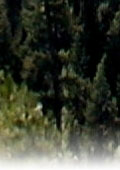Got Weeds? Get Goats
Poison oak, yellow star thistle, spotted knapweed, Himalayan blackberry thickets, or buck brush taking over your landscape? Goats may be a part of your solution. Goats possess a unique characteristic that separates them from almost all other types of livestock. They would rather eat brush and weeds than grass, because they are browsers, whereas cattle are grazers. Boer Goats have been observed in Douglas City climbing steep slopes to hit a wall of brush at a dead run in order to strip every leaf off of every stem and branch. These goats did not have their fill until they ate every brush, briar and weed. Browsing for short durations has been shown to reduce seedlings and rosettes of spotted knapweed without affecting the associated grasses and has been effective in eradicating yellow star thistle. Another advantage to using goats to defoliate undesirable plants is there capacity to leave behind many soil building pellets. One goat can produce 1 ton of manure in a year. Fecal pellets make an excellent fertilizer, which does not normally attract flies nor breed maggots – but be careful that the goats are not kept too close to a stream, for this same source of fertilizer can contaminate the water.
Creating defensible space around the home is necessary for all Trinity County residents. For the past decade or more, the use of goats for controlling weedy and brushy areas that provide fuel for fire has greatly increased. Goats may be one tool; however, in order to effectively eliminate brush and weeds, goats must be kept in the area to be controlled until the undesirable plant species are eliminated. The cost of fencing materials needs to be taken into account. Materials for fencing a five-acre parcel could cost approximately $1500. If you are interested in using goats for weed control call or email Berna Cooney at the RCD for more information.
|


